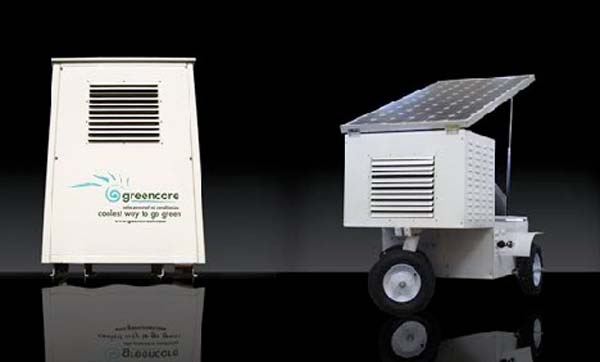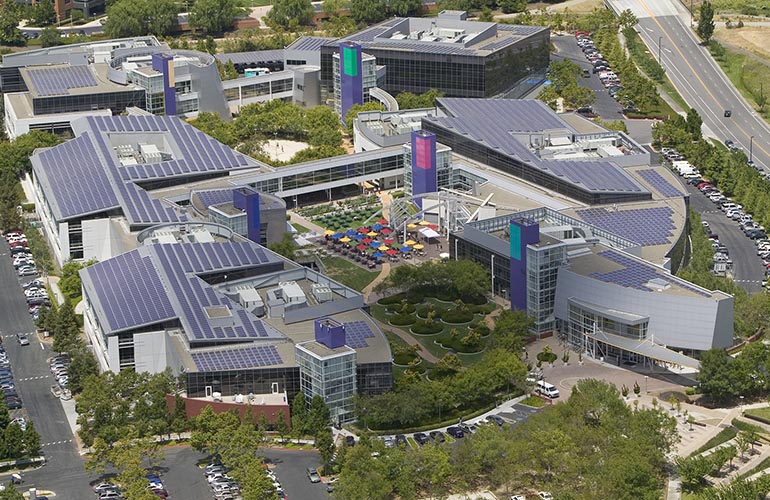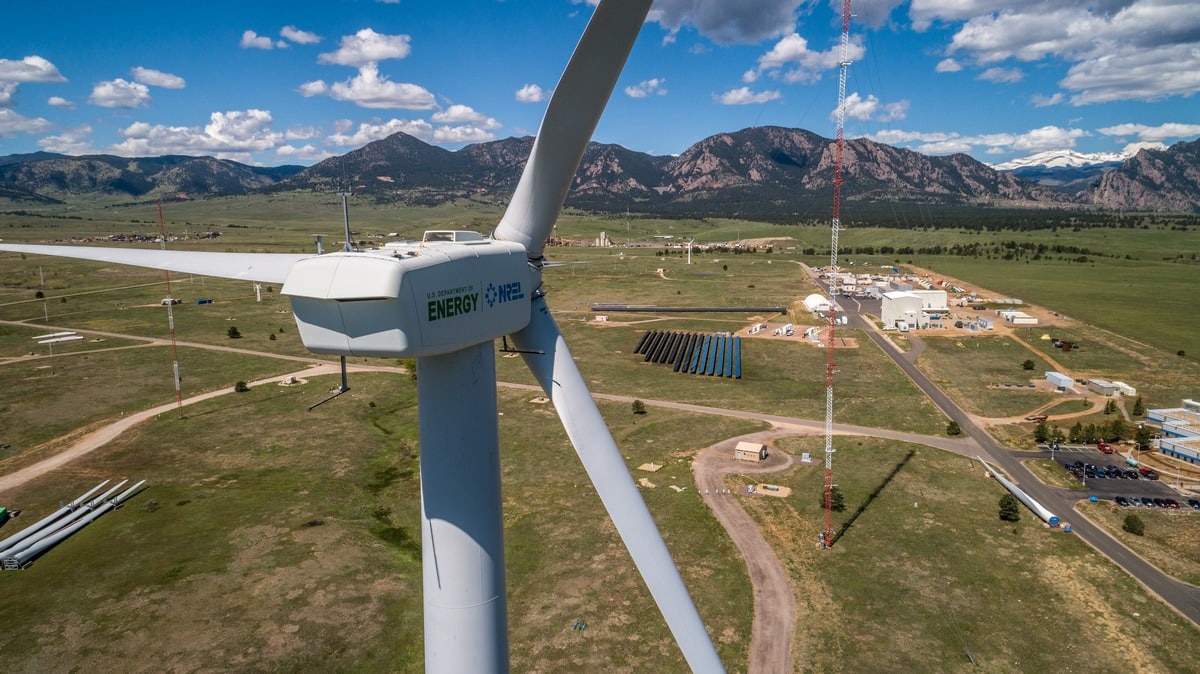

Solar air conditioning is a lesser known solar energy application, but one that has potential for widespread use. Using solar heat to cool a home may seem like a contradictory enterprise but nevertheless has several possible uses in today’s homes, most notably those located in arid climates such as deserts.
There are both active (using fans, pumps, or blowers) and passive employments for solar AC. Other inclusions in this category are solar powered ventilation and swamp coolers using solar electric power.
ACTIVE
There are two main types of active solar air conditioning: solar absorption coolers and solar desiccant cooling systems.
- Solar absorption coolers use solar thermal collectors to absorb solar heat, which in turn separates a mixture containing absorbent and refrigerant fluids. Once separated, the refrigerant is condensed and evaporated to cool air which is then sent into the home. The refrigerant is reabsorbed and the cycle repeats. High temperatures are needed to run absorption systems, which dictate the type of solar thermal collector needed — usually evacuated tube and concentrating collectors. A high proportion of daily sunlight is needed to make them truly effective, even as a complementary (to conventional systems) cooling source.
- Solar desiccant cooling utilizes a process in which moist warm air is passed over a “desiccant wheel” containing solid desiccants which absorb the moisture from the air, effectively cooling it. This cooled air is then sent via fans into the home to supplement cooling loads. The desiccants are then re-dried using solar heat and the process is repeated. Desiccant systems are able to function at lower temperature levels than their absorptive counterparts. A new type of desiccant cooling — using liquid rather than solid desiccants — is now penetrating the niche solar cooling market.
- Evaporative coolers or swamp coolers are not a new technology. They have long been used to cool homes in hot and dry regions like the desert Southwest and the Middle East. Put simply, they pump warm air through moist pads, causing the water to evaporate and effectively cooling the air that passes through. This air is then blown into the home. Swamp coolers are not quite as effective as conventional air conditioners, especially in humid climates, but use much less electricity to run. That fact has made them a prime candidate for solar electric power, which can be used to run the motors and fans involved.
PASSIVE
Passive solar air conditioning is built into the design of the home. Most commonly this comes in the form of a solar cooling tower, or solar chimney. On the south face of the house you have a solar chimney, which is glazed on its south side to absorb solar radiation. This chimney will be connected to the interior of the house by way of a vent at a high point on the interior wall. The heat created in the solar chimney, which naturally wants to rise upward, creates an updraft which draws air out of the house.
On the other end of the house will be a vent at a low point, usually connected to a large pipe that runs underground (about 6-12 feet deep) away from the house where it returns to the surface. Air is drawn into the pipe (by way of the updraft created by the solar chimney) and is cooled by the relatively consistent and cool underground temperatures before it is sucked into the house, cooling the ambient air within.
SOLAR VENTILATION
While not technically a solar air conditioning application, solar powered attic and gable vents can have a significant impact on a home’s cooling needs. Without the need of wiring or drawing of grid electricity, solar vents help maintain air flow throughout the attic, preventing the trapping of warm air and thus increasing air flow throughout the home, as well as helping to extend the life of the building and roof.
THE COST BARRIER
The biggest barrier, especially to active solar cooling systems, is up-front costs. Even at their best, solar air conditioning systems will only meet at best about half of a home’s cooling needs, according to the Department of Energy. Therefore they have largely been relegated to large commercial applications because they can make the most difference on a large scale. Still, as technology and innovation improves across the solar industry, expect it to have some notable and positive effect on solar air conditioning as well.







